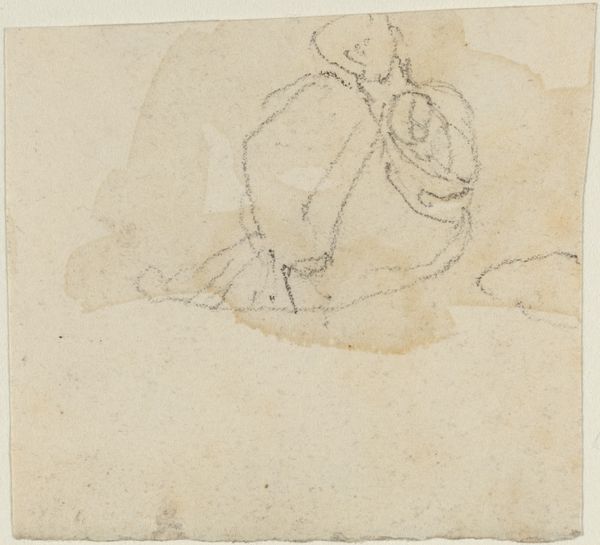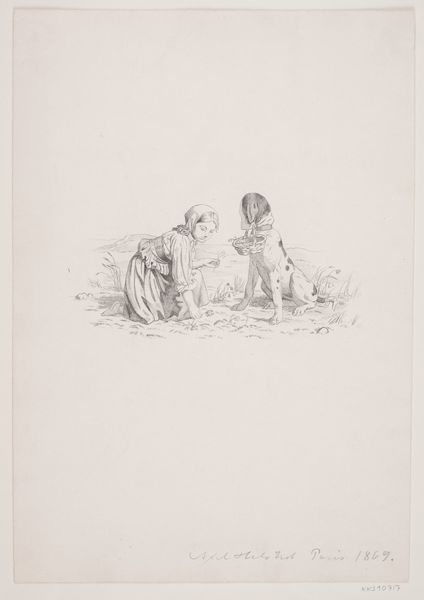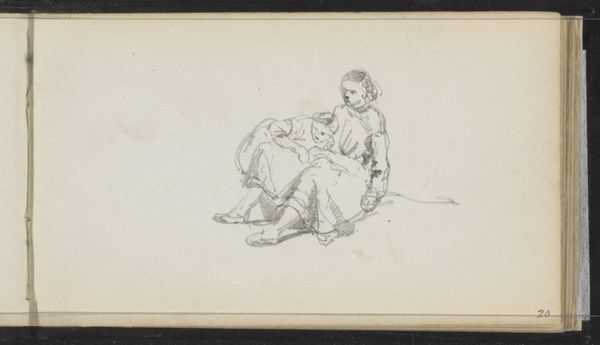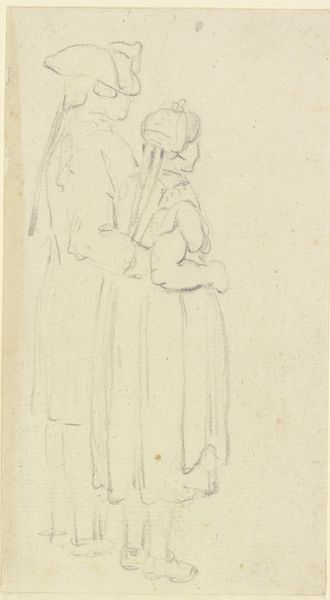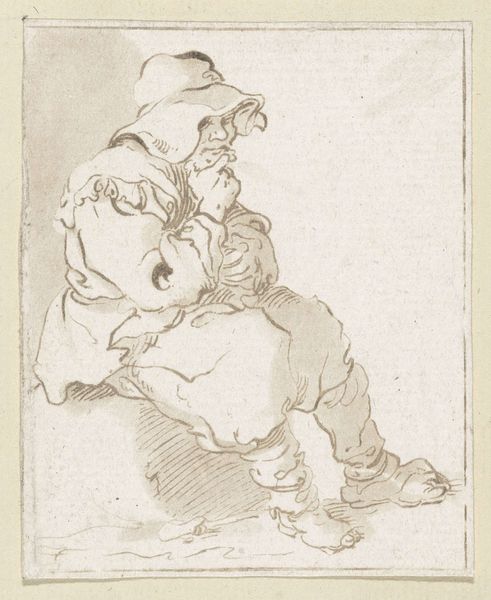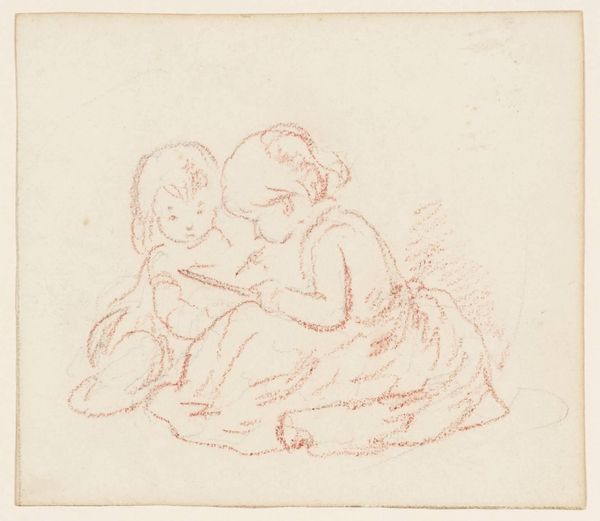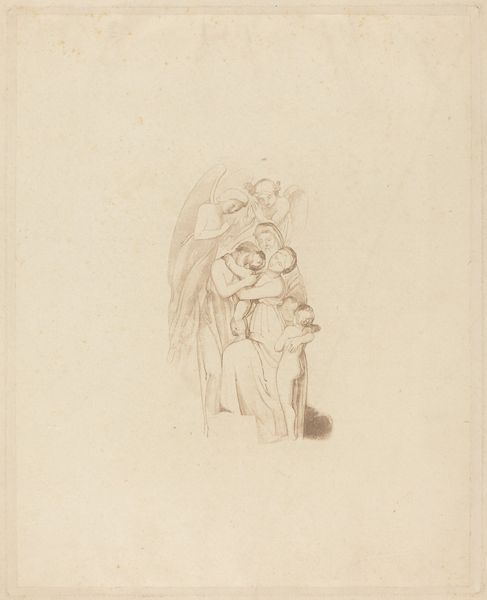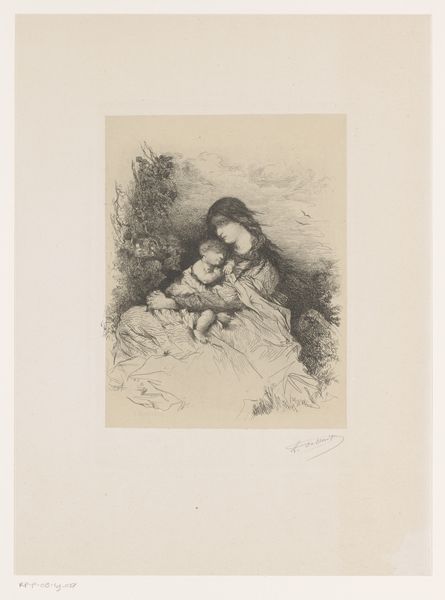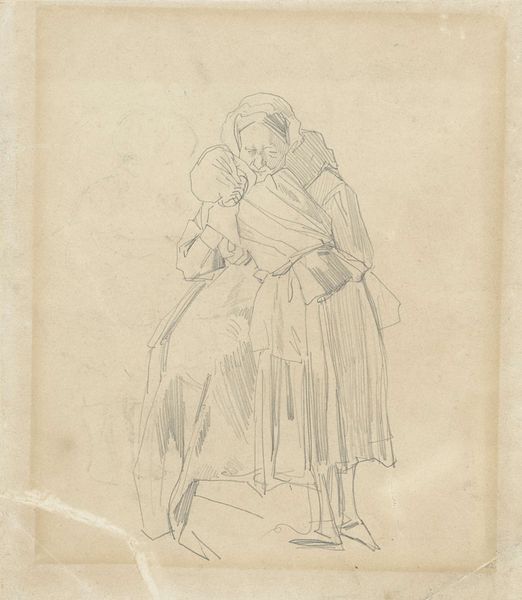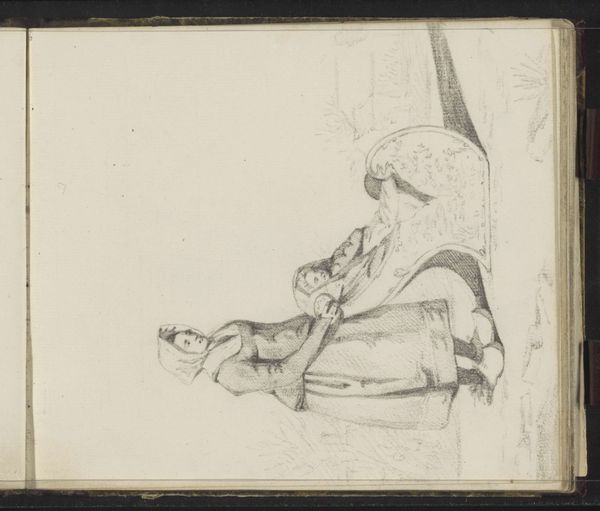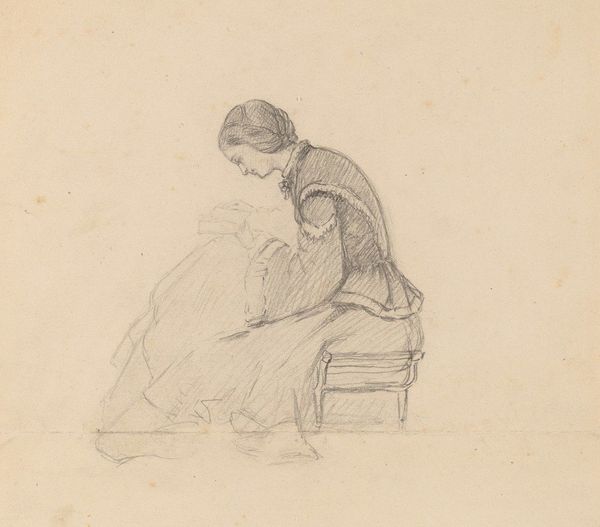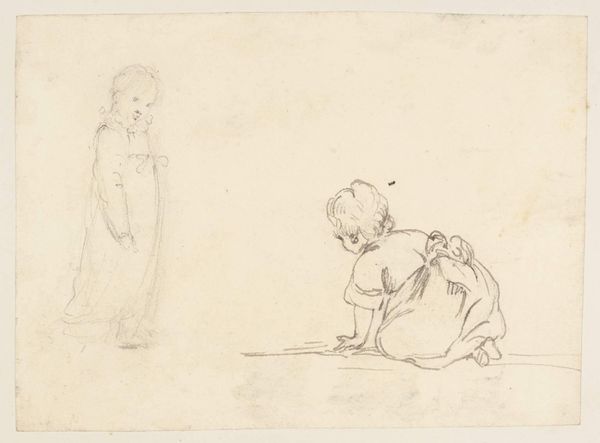
Auf dem Boden hockende schlafende Frau, neben ihr ein Topf und ein Kochlöffel c. 1771 - 1772
0:00
0:00
Copyright: Public Domain
Curator: This is "Auf dem Boden hockende schlafende Frau, neben ihr ein Topf und ein Kochlöffel," or "Sleeping Woman Crouching on the Ground, with a Pot and a Cooking Spoon beside Her," a drawing made around 1771-1772 by German artist Georg Melchior Kraus. Editor: It hits you, doesn’t it? Just raw, exposed. Like a quick sketch from life, full of immediate, palpable weariness. She’s completely huddled into herself. Curator: Kraus was a significant figure in the Weimar Classicism movement, and head of the Weimar Princely Free Drawing School. The work here reflects Kraus’ interest in direct observation and capturing human experience, typical of his approach as an instructor. Editor: There’s something about that simple pencil and chalk on toned paper that makes her story feel so universal, timeless even. Look at how her face is buried; you can almost feel the weight of her exhaustion, the sheer physical drain. And that pot, the spoon abandoned right next to her...it whispers a whole life story of simple daily labor, doesn’t it? Curator: Exactly. In the context of the Enlightenment era, with growing social inequalities, the drawing underscores a sensibility towards everyday lives. It offers an intimate look at the domestic existence of ordinary people, which art was starting to represent in a novel manner. Editor: It feels both sympathetic and removed. Like we are granted a fleeting, voyeuristic glimpse into a moment of extreme vulnerability. Even the roughness of the sketch seems to amplify that immediacy. What does this level of direct observation say about Kraus's engagement with people who have been marginalized or gone unseen? Curator: It speaks to a shifting gaze, definitely. Romanticism influenced a turn towards representations of both the monumental and the marginal. While it avoids idealizing the subject, some argue these images also could distance the privileged viewer. These depictions offered a means to consider socio-economic realities. Editor: That makes sense. So the drawing acts as social commentary while simultaneously inviting us to contemplate very personal human experience? Art continues to be layered, doesn't it? Thanks, Georg, for giving me the feels and also some serious food for thought. Curator: Yes, quite so. Hopefully, you’ll all spend a bit more time looking closely, and considering all the questions this artwork inspires.
Comments
No comments
Be the first to comment and join the conversation on the ultimate creative platform.
